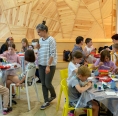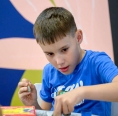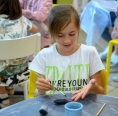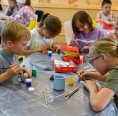-
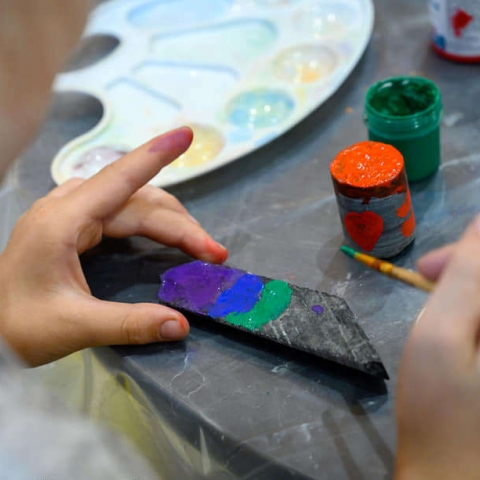
WHAT STONES TELL
-
Address:
A meeting with Christina Gorlanova, an artist, a curator and the head of the Ural Branch of the Pushkin State Museum of Fine Arts was held in the creative public space Art-Satka. She held a lecture and a workshop for young people on the use of stone in contemporary sculpture and installation and a workshop for children titled “Stone Magic”.
The students of the first year of the Medical College of Satka and young artists of Art School No. 1 named after Yu. A. Rozum attended the lecture at noon. They got acquainted with projects of contemporary artists who use stone as the basic material for their work. For example, the British artist Cornelia Parker creates projects with “floating” minerals in the exhibition space. Claudia Comte from Switzerland shows their beauty in unusual sculptures.
Classical and contemporary sculpture, features and uniqueness of stone installations, sculptures located in the streets and parks of our city — there were many interesting topics for discussion.
“Modern sculpture is unique. The smooth or the sharp contour, masses interaction, grace — everything plays an important role in the creation of works of stone. The main task of the sculptors is to get a visitor interested in simple forms, their specificity, the way one can use this classical material to create a non-classical object,” said Kristina Gorlanova.
There was a workshop on drawing on stones after the lecture and each of the children was able to show themselves and their imagination.
Drawing on core pieces (rock samples) of magnesite and dolomite continued in the evening. Kristina held a workshop for young residents of Satka. The meeting attracted young geologists, participants of the project “Occupational, Educational and Touristic Methods to Research the Minerals of Satkinsky District” (the author is Denis Akhmadullin, a young professional of the Magnezit Group). At first, children learned the origin of magnesite and dolomite, studied their properties, tried to guess what kind of material (stone or wood) is hidden under the paint in the artists’ works. This enlightening lead-in was followed by a creativity session.
The ones who used acrylic and gouache paints became the authors of bright stone paintings and gave their works rather telling titles: The Car of the Future, The Monument to Me, The Rock Garden, The Dream Tree (if you give its flower to mum, the wish will definitely come true).
Those of romantic kind painted a summer evening, landscapes with sunsets, birds and even turned their core into a blooming rose. The experimenters tinted stones with watercolor and got pale pink, lilac or even multi-colored marble. The visionaries gave their rocks new names: kermanite, for example.
The fascinating process is continued. Today, the Magic Stone studio is open throughout the day in Art-Satka and anyone can draw on core pieces.
Source: Magnezitovets. Photo by Vasily Maksimov.
-
26.08 - 26.08
DIARY OF THE THIRD INDUSTRIAL BIENNALE
-
28.11 - 28.11
MY SATKA FESTIVAL WINS THE CONTEST OF CORPORATE VOLUNTEER PROJECTS
-
13.10 - 15.10
COOPERATION WITH VGIBL NAMED AFTER M.I. RUDOMINO


